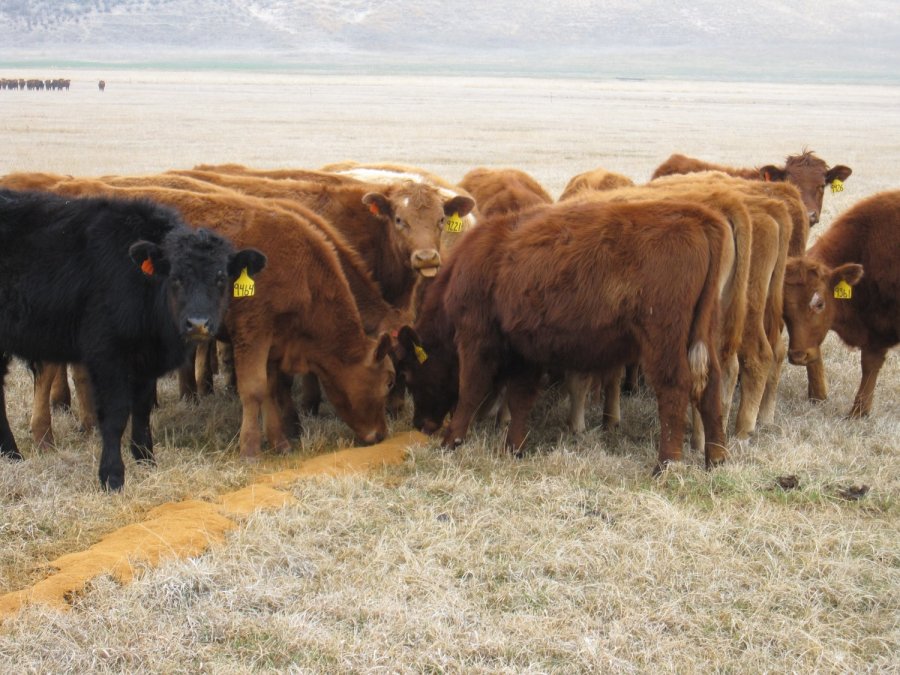
By Aaron Stalker, UNL Beef Range Systems Specialist
In recent months distillers grain price has declined while at the same time beef cattle prices have reached historic highs. In many situations distillers grains may be a good option to increase weight of calves and yearlings or for use as a winter protein supplement for cows. Distillers grains are well suited to forage based beef production operations because they are a good source of energy, protein and phosphorus. All three can be limiting in in forages.
Recently, manufactured cubes (or cake) comprised solely of distillers grains have become available. The quality of these cubes is excellent resulting in few fines (small particles) and good consumption. However, to capture the full economic benefit of low priced distillers grains producers should consider purchasing distillers directly from the ethanol plant and feeding it as a commodity.
Recent work at UNL has addressed the question of which is more economical, feeding distillers grains in a bunk or on the ground. Work with weaned calves indicated about 16% wet distillers grains and 40% of dry distillers grains are lost when fed on the ground. Calculating the cost of the lost distillers grains is straight forward. Simply calculate the amount lost using the percentages above and multiply by the unit cost of distillers gains. Calculating other costs is relatively simple as well. We calculated the cost of purchasing bunks (including delivery, tax, depreciation, and set up) was $0.16 per day. At today’s prices the lost distillers grains would be much less than the cost of the bunk. However, feeding on the ground may not always be the most profitable. In our studies the calves fed in a bunk gained between 0.20 and 0.26 lbs more per day. Because the value of the additional weight gained by calves fed in a bunk is worth so much more than to additional cost to achieve that weight gain feeding in a bunk was the most profitable even though it cost more. There are situations were feeding on the ground may be the most profitable, such as when the least cost of gain to achieve a programed rate of gain is the goal. However, if the goal is to market the weight gain at the end of the feeding period, feeding in a bunk would be the most profitable with today’s price relationships. More information can be found in the two beef reports below.
Musgrave, J. A., L. A. Stalker, T. J. Klopfenstein, and J. D. Volesky. 2012. Comparison of feeding dry distillers grain in a bunk or on the ground to cattle grazing subirrigated meadow. Nebraska Beef Cattle Report. MP 95:51-52.
http://beef.unl.edu/c/document_library/get_file?uuid=4515b69b-44b2-4051-bdf2-d2138bfba295&groupId=4178167&.pdf
Musgrave, J. A., L. A. Stalker, M. C. Stockton and T. J. Klopfenstein. 2010. Comparison of feeding wet distillers grains in a bunk or on the ground to cattle grazing native Sandhills winter range. Nebraska Beef Cattle Report. MP93:19-20.
http://beef.unl.edu/Comparison201006